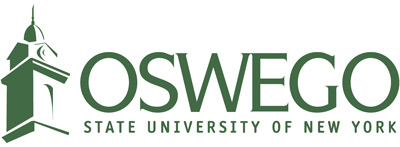With Thursday, Oct. 23 marking the 53rd anniversary of the creation of the National Marine Sanctuaries system, through the National Marine Sanctuary Act of 1972, SUNY Oswego's Great Lakes Institute was among the institutions celebrating National Marine Sanctuary Day
Since 2023, this holiday has been championed by the National Marine Sanctuary Foundation, chartered by the U.S. Congress as the official nonprofit partner of the National Marine Sanctuaries system.
Signed into law by President Richard Nixon, the act was heralded as a key achievement by Congress and the federal government to combat damage and deterioration of America’s most beautiful and historic waters. The National Marine Sanctuaries system is overseen by the National Oceanic and Atmospheric Administration (NOAA), an agency of the U.S. Department of Commerce, through its Office of National Marine Sanctuaries.
NMSF’s Sanctuary Community Fund awarded SUNY Oswego's Great Lakes Institute a $100,000 grant in January 2025 to invigorate community outreach and education programs supporting the Lake Ontario National Marine Sanctuary. The sanctuary, designated by NOAA in June 2024, covers 1,722 square miles of eastern Lake Ontario up to the Canadian border across four counties of New York state (Cayuga, Wayne, Oswego and Jefferson).
Building on the first anniversary of the new Sanctuary, the Great Lakes Institute began its educational programming this summer at the university's Sheldon Institute youth enrichment program. Programming continued in October with the popular Day in the Life field trip curriculum, created by the New York State Department of Environmental Conservation and the Rochester Institute of Technology.
The Great Lakes Institute is expanding program options to offer schools from the sanctuary’s four-county region, including support to travel to Oswego’s campus, to engage in interactive activities and presentations across three content areas: maritime history and archeology, biology and aquatic life, and maritime geology and physical environment.
While the activities emphasize local communities’ connection to Lake Ontario, the curriculum also increases awareness of the larger Great Lakes ecosystem and historic connections across cities and towns within the sanctuary and beyond. Lake Ontario NMS is the third national marine sanctuary in the Great Lakes region, after Thunder Bay NMS in Michigan (designated 2000) and Wisconsin Shipwreck Coast NMS (designated 2021).
The Great Lakes Institute’s curriculum development, supported by NMSF, was tested at pilot sessions during the 46th annual Sheldon Institute for Barbara Shineman Scholars, a summer day camp for students from kindergarten to ninth grade run on campus by the Division of Extended Learning.
Great Lakes Institute director Lisa Glidden, a professor in the Department of Politics, took part as an activity facilitator. Students learned to identify different species of fish and other aquatic animals in Lake Ontario, learned how the Great Lakes were formed, and gained an understanding of the full complexity of lake ecosystems through watercolor painting and sidewalk chalk, memory card games, and building watersheds.
“It has been so fun over the last few months to make the lake and the Lake Ontario National Marine Sanctuary more tangible to children in our region," Glidden said. "I’m excited to build out our programs to a broader audience, so that we can share this special place and the history that is being preserved as part of the National Marine Sanctuary system.”
Lake Ontario NMS contains 41 confirmed shipwrecks spanning more than two centuries of maritime heritage and one confirmed aircraft wreck from World War II. A number of federally and state-protected endangered, threatened and special species of concern reside in or migrate through Lake Ontario NMS, from birds to bats to fish of all sizes.
For more information on the Lake Ontario National Marine Sanctuary, visit the NOAA website at sanctuaries.noaa.gov/lake-ontario. For more information on the Great Lakes Institute at SUNY Oswego, visit its website at ww1.oswego.edu/great-lakes-institute.
-- Submitted by the Great Lakes Institute


